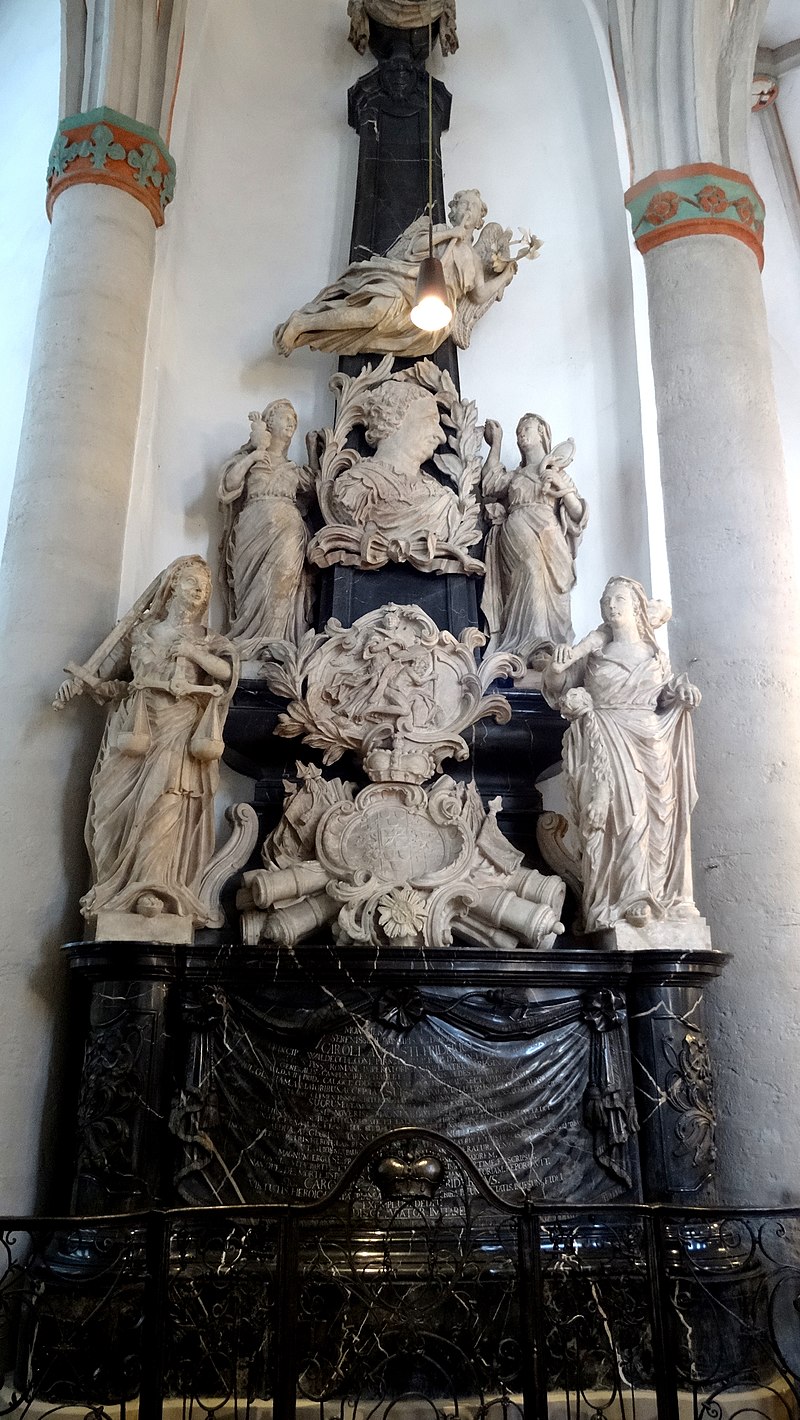by Susan Flantzer © Unofficial Royalty 2021
The County of Waldeck was a county within the Holy Roman Empire since 1180. In 1625, the much smaller County of Pyrmont became part of the much larger County of Waldeck through inheritance and the combined territory was known as the County of Waldeck-Pyrmont. In 1712, Friedrich Anton Ulrich, Count of Waldeck-Pyrmont was elevated to Prince of Waldeck-Pyrmont by Holy Emperor Karl VI.
Friedrich, the last Prince of Waldeck-Pyrmont, abdicated on November 13, 1918, and negotiated an agreement with the government that gave him and his descendants the ownership of the family home Arolsen Castle and Arolsen Forest. Today the territory that encompassed the Principality of Waldeck-Pyrmont is located in the German states of Hesse and Lower Saxony
Friedrich Karl August, Prince of Waldeck-Pyrmont was born on October 25, 1743, in Zweibrücken, Palatinate of Zweibrücken-Birkenfeld, his mother’s homeland, now in the German state of Rhineland-Palatinate. He was the second but the eldest surviving of the five sons and the second of the seven children of Karl August, the reigning Prince of Waldek-Pyrmont and Christiane Henriette of Zweibrücken-Birkenfeld, daughter of Christian III, Count Palatine of Zweibrücken-Birkenfeld and Caroline of Nassau-Saarbrücken.
Through their mother, Friedrich Karl August and his six siblings were the first cousins of Grand Duke Ludwig II of Hesse and by Rhine, King Friedrich Wilhelm III of Prussia, Grand Duke Karl Friedrich of Saxe-Weimar-Eisenach, and King Ludwig I of Bavaria.
- Prince Karl of Waldeck and Pyrmont (1742 – 1756), died in childhood
- Prince Christian August of Waldeck-Pyrmont (1744 – 1798), unmarried, General of the Cavalry in the Austrian Army, Field Marshal in the Portuguese Army
- George I, Prince of Waldeck-Pyrmont (1747 – 1813), married Augusta of Schwarzburg-Sondershausen, had thirteen children
- Princess Caroline of Waldeck-Pyrmont (1748 – 1782), married Peter von Biron, Duke of Courland and Semigallia, no children, divorced
- Princess Luise of Waldeck-Pyrmont (1751 – 1816), married Friedrich August, Duke of Nassau, had seven children
- Prince Ludwig of Waldeck-Pyrmont (1752 – 1793), Major General of the Dutch Cavalry, killed in action

Friedrich Karl August’s family in 1756; Credit – Wikipedia
In his teens, Friedrich Karl August studied in Lausanne, Switzerland for a year, and then embarked on a grand tour of Italy and France. On August 29, 1763, his father died and Friedrich Karl August succeeded him as reigning Prince of Waldeck-Pyrmont. However, his mother Christiane Henriette served as Regent of the Principality of Waldeck-Pyrmont until 1766.
Friedrich Karl August had an affair with Charlotte Hermann, the daughter of one of the Waldeck-Pyrmont government councilors, and he wanted to marry her. Charlotte was neither royal nor noble and so Friedrich Karl August’s mother unsuccessfully attempted to have the Holy Roman Emperor ennoble her. The resistance of both Friedrich Karl August’s relatives and Charlotte Hermann’s father prevented even a morganatic marriage and Friedrich Karl August never married.
Like his father and two of his brothers, Friedrich Karl August had a military career. Beginning in 1757, when he was fourteen years old, Friedrich Karl August served in the Imperial Army of the Holy Roman Empire with the rank of Imperial Lieutenant Colonel. He was promoted to Imperial Lieutenant General in 1766. In 1772, Friedrich Karl August moved to the Dutch Army, where he was awarded the rank of Major General. His father had agreed for three Waldeck-Pyrmont battalions to serve with the Dutch Army so Friedrich Karl August’s switch was unsurprising. In 1767, he ordered a fourth Waldeck-Pyrmont battalion to serve with the Dutch Army. After serving in 1793 – 1794 in the Dutch Army with a fifth Waldeck-Pyrmont battalion in support of the Dutch over French revolutionaries, Friedrich Karl August retired from active military service.
After a visit to England in 1775 to learn how to modernize Waldeck-Pyrmont, Friedrich Karl August instituted plans for road construction, agriculture improvements, wool and linen production, and iron mining. The education system was improved and a gymnasium, the term for a German secondary school was constructed in Korbach.
These investments led to an increase in the principality’s debt. In an attempt to increase funds, Friedrich Karl August sent Waldeck-Pyrmont troops as mercenaries to support the British in the American War of Independence. However, the debt continued to increase which necessitated Friedrich Karl August going to the court of the Holy Roman Emperor in Vienna to declare bankruptcy. In 1805, Friedrich Karl August unsuccessfully attempted to sell the Pyrmont as a cost-cutting measure. Instead, he decided to divide the Principality of Waldeck-Pyrmont, giving his brother Georg Pyrmont, while he kept Waldeck. In 1807, at the suggestion of his brother Georg, he joined the Confederation of the Rhine and was given a seat in the College of Princes of the Federal Assembly.

Church of St. Mary; Credit – Wikipedia
Friedrich Karl August died at age 68 on September 24, 1812, in Arolsen, Principality of Waldeck-Pyrmont, now in the German state of Hesse. He was first buried at the Stadt-Kirche Bad Wildungen (link in German) in Bad Wildungen now in the German state of Hesse. In 1962, his remains were transferred to the Princely Burial Chapel of St. Nicholas at the Church of St. Mary (link in German) in Netze, a district of Waldeck, now in the German state of Hesse. Because Friedrich Karl August was unmarried, his brother Georg succeeded him and Waldeck and Pyrmont were reunited.
This article is the intellectual property of Unofficial Royalty and is NOT TO BE COPIED, EDITED, OR POSTED IN ANY FORM ON ANOTHER WEBSITE under any circumstances. It is permissible to use a link that directs to Unofficial Royalty.
Waldeck-Pyrmont Resources at Unofficial Royalty
- Principality of Waldeck-Pyrmont Index
- Profiles: Princes and Consorts of Waldeck and Pyrmont
- Waldeck and Pyrmont Royal Burial Sites
Works Cited
- De.wikipedia.org. 2020. Friedrich Karl August (Waldeck-Pyrmont). [online] Available at: <https://de.wikipedia.org/wiki/Friedrich_Karl_August_(Waldeck-Pyrmont)> [Accessed 2 December 2020].
- En.wikipedia.org. 2020. Friedrich Karl August, Prince Of Waldeck And Pyrmont. [online] Available at: <https://en.wikipedia.org/wiki/Friedrich_Karl_August,_Prince_of_Waldeck_and_Pyrmont> [Accessed 2 December 2020].
- Flantzer, Susan, 2020. Christiane Henriette of Zweibrücken-Birkenfeld, Princess of Waldeck-Pyrmont, Regent of Waldeck-Pyrmont. [online] Unofficial Royalty. Available at: <https://www.unofficialroyalty.com/christiane-henriette-of-zweibrucken-birkenfeld-princess-of-waldeck-pyrmont-regent-of-waldeck-pyrmont/> [Accessed 1 December 2020].
- Flantzer, Susan, 2020. Karl August, Prince of Waldek-Pyrmont. [online] Unofficial Royalty. Available at: <https://www.unofficialroyalty.com/karl-august-prince-of-waldeck-and-pyrmont/> [Accessed 1 December 2020].
- Flantzer, Susan, 2020. Royal Burial Sites Of The Principality Of Waldeck-Pyrmont. [online] Unofficial Royalty. Available at: <https://www.unofficialroyalty.com/former-monarchies/german-royals/principality-of-waldeck-and-pyrmont/royal-burial-sites-of-the-principality-of-waldeck-pyrmont/> [Accessed 30 November 2020].
- GbR, S., 2020. Friedrich Karl August, Fürst Von Waldeck-Pyrmont. [online] Waldecker-muenzen.de. Available at: <http://www.waldecker-muenzen.de/Regent_Beschreibung_Friedrich%2BKarl%2BAugust%2Bals%2Bselbst%E4ndiger%2BRegent_29_1.2.html> [Accessed 2 December 2020].
- It.wikipedia.org. 2020. Federico Carlo Augusto Di Waldeck E Pyrmont. [online] Available at: <https://it.wikipedia.org/wiki/Federico_Carlo_Augusto_di_Waldeck_e_Pyrmont> [Accessed 2 December 2020].































